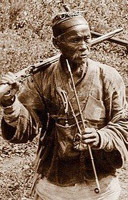

|
Korean Job Discussion Forums
"The Internet's Meeting Place for ESL/EFL Teachers from Around the World!"
|
| View previous topic :: View next topic |
| Author |
Message |
wylies99

Joined: 13 May 2006
Location: I'm one cool cat!
|
 Posted: Wed Aug 13, 2008 12:51 am Post subject: Article about the origins of the Korean Registration Cards Posted: Wed Aug 13, 2008 12:51 am Post subject: Article about the origins of the Korean Registration Cards |
 |
|
http://english.chosun.com/w21data/html/news/200808/200808110024.html
60 Years of the Republic: Resident Registration Cards
�What concerns us is that the freedom currently enjoyed under a democracy could be significantly reduced. Our lives will become vulnerable to constant exposure.� The editorial in the Feb. 7, 1969 edition of the Chosun Ilbo was concerned that the government could seek complete control over society.
The year 1968 saw the emergence of an important feature of the everyday life of Koreans: national identification cards, or resident registration cards, began to be issued on Nov. 21. For a long time getting the card was like a coming-of-age ceremony. It was a must-have at all times, and served as security when you ran out of money, or had to borrow a book. It was also a symbol of random questioning by the patrolling forces of the law.
There had been an effort to issue identification cards during the Korean War on a municipal and provincial basis, but it was never a centralized effort. Even after the resident registration law was promulgated in May 1962, progress was minimal, but the incident on Jan. 21, 1968, when a group of 31 heavily armed North Korean commandos crossed the border and came within meters of the presidential residence to assassinate president Park Chung-hee, changed all that.
The purpose of amending the law was to make it easier to ferret out �seditious elements� in society and keep a close watch on people. The resident registration number was a 12-digit number at first, but from 1975, it had 13 digits. From 1999, the material was changed from paper to plastic.
What caused the controversy at first was the identification number, which contained every detail of the personal information of all citizens aged 17 years or older. While it helped crime prevention and investigation, there was a high risk that people could be subjected to government surveillance. There were rumors that the numerical system had its precedent in Manchukuo, where Park had served as a military officer during the Japanese colonial period. As information technology became more and more advanced, there was a higher risk of abuse of personal data.
Park made various efforts to consolidate the �unity of the people� around the time. The statue of Admiral Yi Sun-shin, who repulsed Toyotomi Hideyoshi�s invasion of Korea in the 1590s, was set up in Sejongno on April 2, 1968. On Oct. 9, he decreed that only the Korean alphabet be used in official documents. On April 28, 1969, renovation and reconstruction of Hyeonchungsa Temple in Asan, South Chungcheong Province, where Admiral Yi is enshrined, was completed. All these efforts had both bright and dark sides -- promotion of patriotism and national consciousness vs. excessive nationalism and control of the public.
([email protected])
url: http://english.chosun.com/w21data/html/news/200808/200808110024.html |
|
| Back to top |
|
 |
bluelake

Joined: 01 Dec 2005
|
 Posted: Wed Aug 13, 2008 4:31 am Post subject: Posted: Wed Aug 13, 2008 4:31 am Post subject: |
 |
|
Today's ID cards are better than what Koreans had to carry in the Joseon dynasty. Back then, you had to always have on your person a hwapae, which was a block with your information on it. What the block was made of and its size and shape was determined by your social position. A yangban (aristocrat) would have a relatively small, flat wood or ivory one, while a baekjeong (outcast) would have a relatively large, wood cubical one. To be caught without it was a huge offense.
Last semester in my Korean history class, I had the students all make their own hwapae on thick hanji paper. It had their names on it (in 한글 or 한자), along with their birth year (based upon the old year naming system using the combination of ten and twelve Chinese characters) and their "exam" year (using the same year naming system--they would use the year they anticipated graduating). I laminated the cards and the students wore them around their necks for one class. |
|
| Back to top |
|
 |
|
|
You cannot post new topics in this forum
You cannot reply to topics in this forum
You cannot edit your posts in this forum
You cannot delete your posts in this forum
You cannot vote in polls in this forum
|
|

